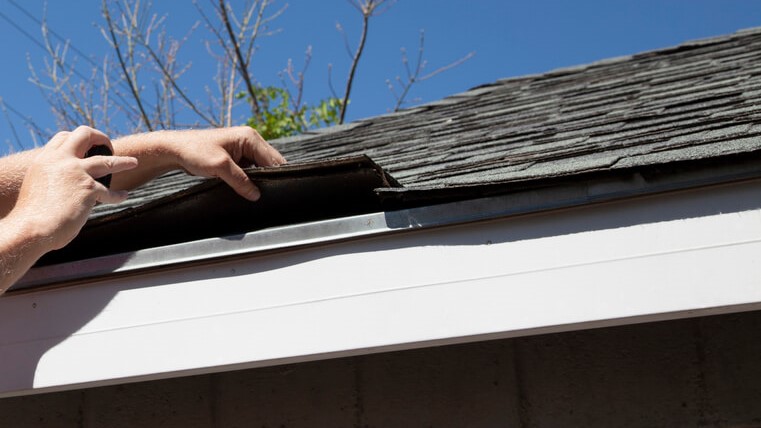Exactly How to Fix Roof Leak - Expert Tips and Services
Exactly How to Fix Roof Leak - Expert Tips and Services
Blog Article
The Ultimate Guide to Addressing Roof Leakages and Preventing More Damages

Common Reasons For Roofing Leaks
Roofing leaks can occur due to various elements, such as harmed roof shingles, incorrect installation, or clogged seamless gutters. Damaged roof shingles, commonly brought on by serious climate condition or regular wear and tear gradually, can produce openings for water to seep via. Incorrect setup of roof covering products, including flashing and underlayment, can also bring about leakages as spaces or inaccurate placement can jeopardize the roof's capability to push back water properly. Additionally, blocked gutters can stop appropriate drainage, creating water to pool on the roofing system and eventually find its means into the home.
Another usual reason of roofing system leakages is the visibility of ice dams, which form when snow melts and refreezes at the roof's side, creating an obstacle that stops appropriate drain. Understanding these typical reasons of roofing system leakages is crucial for effective repairing and avoidance methods.
Recognizing the Source of Leaks
When faced with roof covering leakages, determining the exact source is essential to properly deal with the problem and prevent further damage. Identifying the resource of a roofing system leak can be difficult as water can go into the roof covering in one location and travel before dripping via the ceiling in another (fix roof leak). Once you have actually recognized the basic location of the leak, evaluate the roofing system surface area for missing out on roof shingles, fractured blinking, or damaged seals around chimneys and vents.
DIY Repair Service Techniques
Upon determining the source of a roof covering leakage, carrying out reliable DIY fixing strategies is crucial to without delay attend to the issue and protect against additional damage. Among one of the most typical DIY fixing strategies for roofing system leakages is patching the afflicted location with roofing concrete. This approach involves cleaning up the area around the leakage, applying a generous quantity of roof concrete to the damaged location, and pressing a piece of roofing textile or patching material into the cement to create a water resistant seal.
Another do it yourself fixing technique is making use of roofing system sealant to repair small leaks. Roof sealant can be used along joints, around flashing, and over tiny openings to avoid water from seeping into the roofing system framework. In addition, changing harmed or missing roof shingles can additionally effectively fix roofing system leaks. Thoroughly eliminating the old roof shingles, using roof concrete to the back of the brand-new roof shingles, and protecting it in area can aid avoid further water seepage. When making use of do it yourself repair techniques, constantly prioritize safety by using correct devices and complying with suggested treatments.
Hiring Specialist Aid
Engaging the services of knowledgeable roof covering professionals can supply professional services for dealing with roof covering leakages and ensuring detailed repair services. Expert roofers bring a wide range of understanding and know-how to the table, allowing them to properly diagnose the source of the leakage and provide efficient options. By working with professionals, you can profit from specialized devices and materials that might not be conveniently available to the typical house owner. Additionally, roof experts are well-versed in industry best techniques and safety methods, guaranteeing that the repair is performed successfully and without endangering the architectural integrity of the roofing system.
When choosing a professional roofer, be sure to research their qualifications, experience, and track record in the industry. Search for professionals who are licensed, guaranteed, and deal guarantees on their job to assure top quality and assurance. By entrusting your roof covering repair service needs to skilled experts, you can feel confident that the task will certainly be done right the very first time, conserving you time, money, and prospective frustrations in the future.
Preventative Upkeep Tips
To guarantee the longevity and toughness of your roof, implementing proactive upkeep approaches is important following the completion of specialist fixings by experienced roof covering experts. Cut any kind of looming branches to avoid them from triggering damages to your roofing system during storms or solid winds. By adhering to these preventative Discover More Here maintenance tips, you can lengthen the life of your roof covering and stay clear of pricey repairs in the future - roof repair.

Conclusion
In conclusion, dealing with roofing system leaks without delay is important to prevent additional damage to your home. In addition, applying preventative maintenance suggestions can assist to stay clear of future leaks and keep the stability of your roofing.
Improper installment of roof covering products, including blinking and underlayment, can also lead to leakages as spaces or wrong positioning can compromise the roofing's capability to fend off water effectively. An additional common reason of roof leaks is this content the existence of ice dams, which form when snow refreezes and thaws at the roofing system's side, developing a view barrier that protects against proper drainage. Identifying the source of a roofing leakage can be challenging as water can go into the roofing in one area and traveling prior to leaking via the ceiling in another.Upon identifying the source of a roof covering leakage, implementing effective Do it yourself repair work techniques is crucial to quickly deal with the issue and stop additional damages. Roofing sealant can be applied along joints, around blinking, and over tiny holes to prevent water from seeping into the roof framework.
Report this page